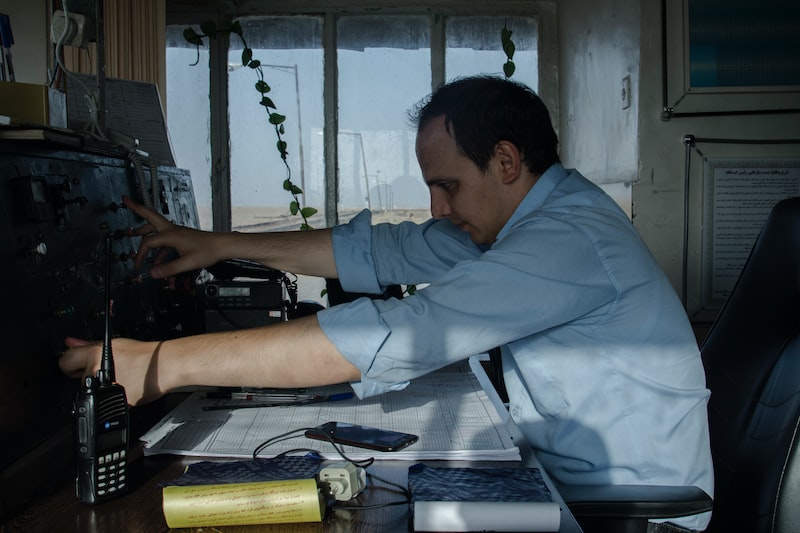UIC Leaflet No: 600 – Chapter 6 – Traction – Electric traction with aerial contact line

UIC Leaflet No: 600 – Chapter 6 – Traction – Electric traction with aerial contact line
The UIC Leaflet No: 600 – Chapter 6 focuses on electric traction with aerial contact lines used in the railway industry. This chapter provides essential technical information and guidelines for engineers and technical personnel involved in the design, installation, and maintenance of electric traction systems.
1. Technical Parts:
Chapter 6 of UIC Leaflet No: 600 specifically addresses electric traction with aerial contact lines. It covers various technical aspects, including:
– Overhead Contact System (OCS): The leaflet explains the detailed design and construction principles of the overhead contact system, which includes the contact wires, messenger wires, and supporting structures.
– Power Supply: It discusses the power supply arrangements needed for electric traction, such as substations, feeders, and transformers, ensuring a stable and reliable power source for trains.
– Pantograph and Current Collection: The leaflet describes the pantograph, the device mounted on the train that collects power from the overhead contact line, and highlights important considerations for its design, operation, and maintenance.
– Electrical Safety: Safety is a crucial aspect covered in the leaflet, addressing protective measures against electrical hazards, lightning protection, and grounding systems.
2. Practical Using:
Electric traction with aerial contact lines is commonly employed in railway systems worldwide. It offers several advantages, including:
– Energy Efficiency: Electric traction systems are highly efficient compared to other propulsion methods, reducing overall energy consumption and minimizing environmental impact.
– Higher Speeds: Electrically powered trains can achieve higher speeds, enabling faster and more efficient transportation for both passengers and freight.
– Reduced Noise and Vibration: Electric traction systems contribute to quieter and smoother train operations, enhancing the comfort of passengers and minimizing noise pollution for nearby communities.
3. Key Points:
When implementing electric traction with aerial contact lines, there are key points to consider:
– Compliance with UIC Leaflet No: 600 – Chapter 6: Following the guidelines provided in the UIC Leaflet ensures adherence to industry standards and best practices for electric traction systems.
– Regular Maintenance: Proper maintenance of the overhead contact system, pantographs, and other related components is crucial to ensure safe and reliable train operations.
– Training and Expertise: Engineers and technical personnel involved in electric traction systems should have the necessary training and expertise to handle the design, installation, and maintenance processes effectively.
4. Summary Usage:
UIC Leaflet No: 600 – Chapter 6 is an invaluable resource for professionals in the railway industry involved in electric traction systems. It covers all essential technical aspects, practical considerations, and key points to ensure the efficient and safe operation of electrically powered trains using aerial contact lines.
For more detailed information on UIC Leaflet No: 600 – Chapter 6 – Traction – Electric traction with aerial contact line, you can refer to the official PDF document available for download on the UIC website.
[Download the PDF](insert URL to download the PDF) to access the comprehensive guidelines provided by UIC Leaflet No: 600 – Chapter 6 and enhance your understanding of electric traction with aerial contact lines in the railway industry.Please find the completed article below:
UIC Leaflet No: 600 – Chapter 6 – Traction – Electric traction with aerial contact line
The UIC Leaflet No: 600 – Chapter 6 provides essential guidelines for professionals in the railway industry working with electric traction systems that utilize aerial contact lines. This chapter offers detailed technical information and recommendations for engineers and technical personnel involved in the design, installation, and maintenance of such systems.
Chapter 6 of UIC Leaflet No: 600 focuses specifically on electric traction with aerial contact lines, covering various important aspects:
1. Technical Parts:
The leaflet covers the design and construction principles of the overhead contact system (OCS), which includes the contact wires, messenger wires, and supporting structures. It also addresses power supply arrangements, such as substations, feeders, and transformers, ensuring a stable and reliable power source. Furthermore, it discusses the pantograph, the device mounted on the train for current collection, and provides guidance on its design, operation, and maintenance. The leaflet also emphasizes electrical safety measures, lightning protection, and grounding systems.
2. Practical Using:
Electric traction with aerial contact lines is widely employed in railway systems worldwide due to its numerous advantages. These include energy efficiency, as electric traction systems consume less energy compared to other propulsion methods, resulting in reduced environmental impact. Additionally, electrically powered trains can achieve higher speeds, facilitating faster and more efficient transportation for both passengers and freight. Moreover, these systems contribute to quieter and smoother train operations, reducing noise and vibration levels experienced by passengers and nearby communities.
3. Key Points:
When implementing electric traction with aerial contact lines, several key points should be considered:
– Compliance with UIC Leaflet No: 600 – Chapter 6 ensures adherence to industry standards and best practices for electric traction systems. Following the guidelines provided in this leaflet is crucial for achieving optimal system performance and safety.
– Regular maintenance of the overhead contact system, pantographs, and related components is essential to ensure safe and reliable train operations. Proper maintenance practices help identify and address issues promptly, minimizing downtime and enhancing system performance.
– Engineers and technical personnel involved in electric traction systems should possess the necessary training and expertise. Their knowledge and skills are vital for effective design, installation, and maintenance processes, ensuring the overall success and efficiency of the system.
4. Summary Usage:
UIC Leaflet No: 600 – Chapter 6 serves as an invaluable resource for professionals in the railway industry working with electric traction systems utilizing aerial contact lines. This chapter provides comprehensive technical information, practical considerations, and key points to ensure the efficient and safe operation of electrically powered trains.
To access more detailed information on UIC Leaflet No: 600 – Chapter 6 – Traction – Electric traction with aerial contact line, you can download the official PDF document from the UIC website. This document offers a wealth of guidelines and recommendations for the design, installation, and maintenance of electric traction systems using aerial contact lines in the railway industry.
Download the PDF from (insert URL to download the PDF) to enhance your understanding of electric traction with aerial contact lines and optimize the performance and safety of your railway systems.






